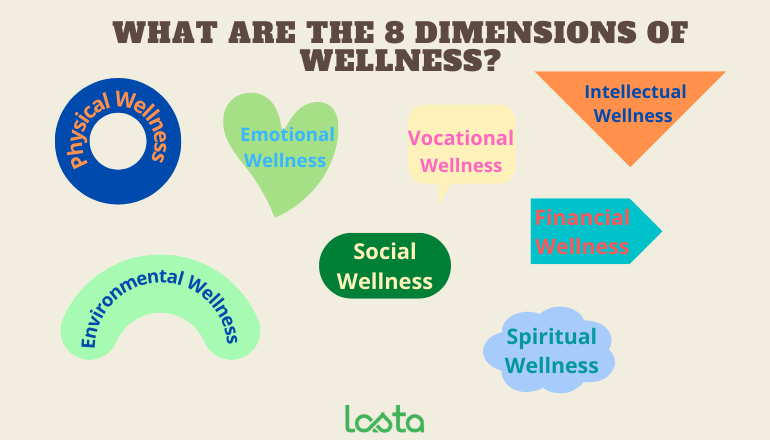Table Of Contents
The value of the health and wellness industry has witnessed a tremendous increase in recent years. According to Statista, the industry’s market size as of 2019 was estimated at 4.4 trillion U.S dollars and will reach over six trillion U.S dollars by 2025. The report also shows that the corporate wellness segment is one of the fastest-growing, with a forecasted value of 93. 4 billion U.S dollars by 2027. About 13% of U.S employers offered onsite massage therapy services, and 25% offered weight loss programs to their staff.
Meanwhile, on the global scale, the Global Wellness Institute states that wellness made up 5.1% of the world’s economic output as of 2020. According to the report, the covid 19 pandemic saw the global wellness economy value at $4.4 trillion in 2020 from $4.9 trillion in 2019. However, with the return to normalcy, the institution projects a 9.9% annual growth of about $7.0 trillion in 2025.
One thing is clear: the health and wellness industry is an integral part of the world’s economy and our lives. Unfortunately, there’s not enough awareness of the industry’s scope. Many people think wellness is about healthy eating, nutrition, exercise & weight loss. While these are significant aspects of wellness, they are just one of the many other segments that include personal care and beauty, mental and workplace wellness, and many more.
This article focuses on discussing the various dimensions of wellness. However, we’ll start by examining the benefits of wellness after a detailed definition of wellness and its closest term—well-being.
What Is Wellness and Why Does It Matter?
According to The Canadian Veterinary Journal, wellness is the state of living a healthy lifestyle, and the purpose of wellness is to enhance well-being. Practicing wellness is more than not falling ill. It refers to all the processes involved in improving a person’s quality of life.
Here’s why wellness is a crucial part of everyone’s life:
- Wellness Improves Self-Esteem and Physical Health
Wellness programs include fitness classes and other activities that help with self-esteem. According to the University of New Hampshire, thirty minutes of aerobic exercise can release beta-endorphins that make you feel good and improve your well-being.
- Wellness Enhances Productivity
The Society for Human Resource Management (SHRM) is a body dedicated to improving the welfare of workers and their employers. While evaluating the role of wellness in the corporate world, they discovered that 90% of business leaders agree that wellness is essential for employee performance and productivity. It also boosts employee morale and engagement while ensuring their safety in the work environment.
- It Reduces the Cost of Healthcare
Global healthcare costs keep rising, with Americans spending hugely on hospital visits and high insurance premiums. Unfortunately, these costs wouldn’t stop increasing with population growth, aging, and the prevalence of diseases and accidents. Wellness programs have proven to be effective in reducing healthcare costs for individuals.
- Wellness Helps Relationships To Thrive
Wellness can improve an individual’s social interactions and vice-versa. Northwestern Medicine Psychologist Sheehan D. Fisher believes that social support strongly correlates with mental health and well-being.
Note that wellness is similar to various well-being definitions and may mean the same thing in specific contexts.
What Are The 8 Dimensions of Wellness?
While wellness involves a state of physical health, proper nutrition, and weight management, there’s more to this term than those. Debbie L. Stoewen, in the Canadian Veterinary Journal, writes, “Wellness necessitates good self-stewardship, for ourselves and for those we care about and who care about us.” People achieve wellness when they act in their best interests through self-regulation, self-awareness, and cultivating positive habits.
There are eight dimensions of wellness. These dimensions refer to the various ways an individual can work towards achieving optimal, all-around wellness. Each dimension is like different pieces that make up a complete puzzle. Although individual puzzles are different and don’t have these dimensions in the same proportion, they must all be present to some degree to ensure overall wellness.
These are the eight dimensions of wellness:

1. Physical Wellness
Physical wellness focuses on developing habits and maintaining a lifestyle that enhances physical health. According to the Grand Rapids Community College (GRCC), it “encompasses a variety of healthy behaviors including adequate exercise, proper nutrition and abstaining from harmful habits such as drug use and alcohol abuse.” It includes learning about diseases and their symptoms and developing strategies to prevent or manage them.
To achieve optimal wellness, individuals must develop these habits:
- Adequate sleep and arrests management
- Accident prevention through the use of helmets, seatbelts, etc
- Early disease detection
- Physical exercises
- Healthy eating with meals rich in fruits and vegetables
- Meal portion control
- Moderate alcohol consumption and zero tolerance for smoking
2. Emotional Wellness
Emotional wellness comprises self-acceptance and self-awareness as the keys to a happier and fuller life. While self-awareness calls for introspection and helps individuals assess their strengths and weaknesses, self-acceptance involves satisfaction with these strengths and flaws. University of Wisconsin’s School of Health Sciences and Wellness defines emotional wellness as a “healthy expression of one’s feelings such as happiness, hope, love, joy, sadness, anger, fear, and stress.” It also manifests in the following skills:
- Time-management
- Stress management
- The ability to forgive self and handle the guilt
- Optimistic attitudes
- The ability to seek support from suitable sources and provide the same to others
3. Social Wellness
Social wellness involves cultivating positive relationships with others and the community one associate with. People who are socially well can connect deeply with various individuals across personality traits. Social wellness also includes the ability to balance relationships with other aspects of life.
An article in the University of Oklahoma’s journal stated that social wellness helps emotional resilience and enables one to “create boundaries that encourage communication, trust, and conflict management.”
To attain social wellness, individuals must learn to display their talents/skills, communicate with others, and participate in community building/programs.

4. Intellectual Wellness
Intellectual wellness has a solid relationship to mental well-being. It refers to a person’s ability to think creatively and find innovative ways to achieve specific goals. When a person is intellectually well, they can learn fast and build on their skills through professional development. Intellectual wellness also includes personal development, open-mindedness, curiosity, community/cultural involvement, and the development of personal hobbies.
The following activities can help to enhance intellectual wellness:
- Reading newspapers, books, and other documents that spike interest in various subjects
- Traveling to learn about new places and cultures
- Active listening
- Exploring and experiencing creativity
5. Environmental Wellness
There’s a deep connection between a person’s overall wellness and the environment. Environmental wellness includes all the necessary processes for achieving good health by maintaining pleasant and beneficial environmental factors. The environment can impact the way humans feel and act.
Environmental wellness is so important that no less than 12 million people worldwide have died from unhealthy environments.
According to Newport News, “Everyone can have a strong environmental conscious simply by raising their awareness and incorporating features that help to make their setting more agreeable to them.”
To attain environmental wellness, individuals must care for the earth and their immediate environments by:
- Having a clean and neat living space
- Prioritizing recycling and waste reduction
- Walking or riding bikes instead of motor vehicles that emit smoke when possible
- Joining the fight against noise, air, and water pollution
6. Spiritual Wellness
Northwestern University describes spiritual wellness as “expanding a sense of purpose and meaning in life, including one’s morals and ethics.” While this may include undertaking religious activities, people without affiliations to any religion can also attain spiritual wellness.
Here’s how people can strive to achieve optimum spiritual wellness:
- Practicing gratitude
- Helping others and volunteering in meaningful programs
- Meditation exercises like yoga
- Keeping a journal
- Enjoying little life pleasures like watching the sunset, taking nature walks, etc
7. Vocational Wellness
When someone has attained vocational wellness, they find fulfillment and happiness in their sources of livelihood or any work they do. Work, here, means “paid part-time and full-time work, unpaid work, apprenticeships, internships, and volunteer work,” according to the Laborers’ Health and Safety Fund of North America.
Also called occupational wellness, vocational wellness can be attained through:
- Exploring career options that best suit skill sets and interests
- Having a vision and daily working towards achieving it
- Open-mindedness and the ability to learn new skills or change careers to suit new talents and interests
8. Financial Wellness
Finally, the right dimension of wellness is financial wellness. It refers to humans’ relationships with their finances and how well they can manage resources to suit their desired standards of living.
To achieve financial wellness, individuals must:
- Have a source of livelihood
- Create financial budgets and stick to them
- Live within their means
- Invest in financial education
- Have long-term and short-term financial goals
Final Words
Whether one wishes to lose weight or keep fit, all-around wellness is essential to maintaining any health goal. So, instead of focusing on one part of well-being, individuals should adopt a holistic approach to health by improving on each dimension of wellness.
Emma Dallmeyer is an expert content writer with over 15 years of writing experience. Emma has completed over a thousand copywriting services throughout her decade-long career. She is a passionate traveler and progress-oriented woman who seeks to help business and cooperate organizations grow and scale their business using her writing service.










Great information shared.. really enjoyed reading this post thank you author for sharing this post .. appreciated
Great information shared.. really enjoyed reading this post thank you author for sharing this post .. appreciated